The 1990s were weird. I know; I grew up in the 90s. But then some cameras were quirky, strange options with different looks and styles. And there is the Photura. At first glance, you will think that the Camera is a camcorder, but not a camcorder from the 1990s, but rather one of those solid-state deals from the 2010s before smartphones caught on as a means of recording your life. But the Photura was not alone; think about the Ricoh Miri and the Yashica Samurai. Yet, there’s a unique thing about the Photura; you can operate it with a single hand, drop in 35mm loading, and a decent lens for the Camera. Thanks to Rob Roy for loaning this odd bit of camera history for a review.
Camera Specifications
Make: Canon
Model: Photura (North America), Epoca (Europe), Autoboy Jet (Japan)
Type: Point-And-Shoot
Format: 135 (35mm), 36x24mm
Lens: Canon Zoom Lens 35-105mm 1:2.8-6.6 (10 Elements, 9 Groups)
Shutter: Electronic Focal Plane Shutter, 2″ – 1/250″
Meter: Composite SPC, 3-Zone Metering, EV 2 ~ EV 17.5 @ ASA-100, ASA-25 – ASA-3200 (DX Only)
Autofocus: 3-Point Smart AF using Near-IR beams
Dimensions (WxHxD): 100 x 74 x 156 mm
Weight: 645g (with Battery)
Power Source: 1x 2CR5 Battery
Year of Manufacture: 1990-1992
Background
Despite the strange appearance of the Photura, the Camera is a peculiar design blip within the iconic Sure Shot lineup of 35mm point-and-shoot cameras from Canon. And was among several similar cameras from the era. The others are the Ricoh Mirai, Olympus AZ-4, and Yashica Samurai. Although these pre-dated the Photura. In 1977 Konica released their C35AF, the world’s first autofocus point-and-shoot compact camera. Canon’s response was 1979’s Sure Shot, with a fixed 38mm f/2.8 lens, but unlike Konica’s offering, Canon used an active IR autofocus system. The first set of Sure Shot cameras remained fixed focus and proved a popular line of cameras. In 1986, the Sure Shot Tele offered up a pair of selectable focal lengths, either 40mm or 70mm (similar to the Minolta Weathermatic DL). Canon released its first true zoom lens point-and-shoot later that same year. The Sure Shot Zoom came with a 35-70mm lens. It also began to take the familiar shape of point-and-shoot cameras we know today. The one strange outlier was 1989’s Sure Shot Zoom XL, which resembles the EOS 650. The Photura came out in 1990 and indeed turned heads. In addition to the strange form factor, the Photura featured a 35-105mm lens, a zoom that had not been installed on a camera of this type before. The Camera hit markets at ¥64,500, including the Camera, a carrying case and a close-up kit. Today the camera kit would cost ¥74,674 or 777.13$ (CAD). Surprisingly, the Photura proved popular enough that in 1992 a follow-up model, the Photura 135, updated the lens to 38-135mm, adjusted the form factor, and made the grey body slightly darker. And while it proved a dead-end design in the still photography market, Canon would apply the form factor to 2010-era solid-state video cameras.

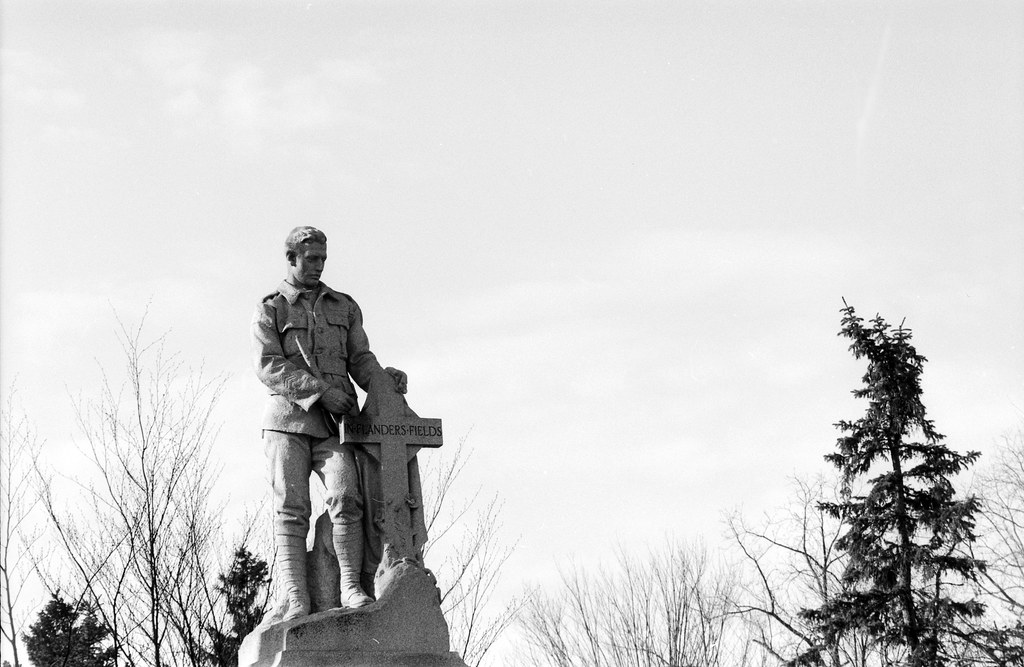


Impressions
When I say this Camera looks weird, I mean weird. At first glance, you’ll think that I’m out there recording video, but I’m working with a point-and-shoot. And for what the Camera is, it isn’t too bad. Layout-wise, the Camera is well-balanced and doesn’t weigh too much. Even in a normal camera bag, it doesn’t take up too much space and almost all the internal workings are contained within the camera body. And it does look like a camcorder from the early 21st century; there’s no denying that, but those cameras were well made and designed. And sure, I don’t think this Camera could take a hit and keep on going, but a minor bump won’t damage the thing. The best part is that it lives up to using it with one hand once you’re in the field. All your controls are right there, the palm grip is comfortable, and your shutter is right there with the zoom toggle switch next to it. And that’s it; anything else is secondary. The other controls are on the back and, while small, are easily used. My biggest concern is the flash unit; it acts as the on/off switch and lens cover. But it swings out to one side, so if it gets hit too hard, it is not connected well and could snap off, rendering the camera useless. Oddly enough, Canon added a switch to direct the viewfinder to the top of the Camera; while I think they intended it to be a waist-level finder, you have to hold it up pretty close to your eye to work.

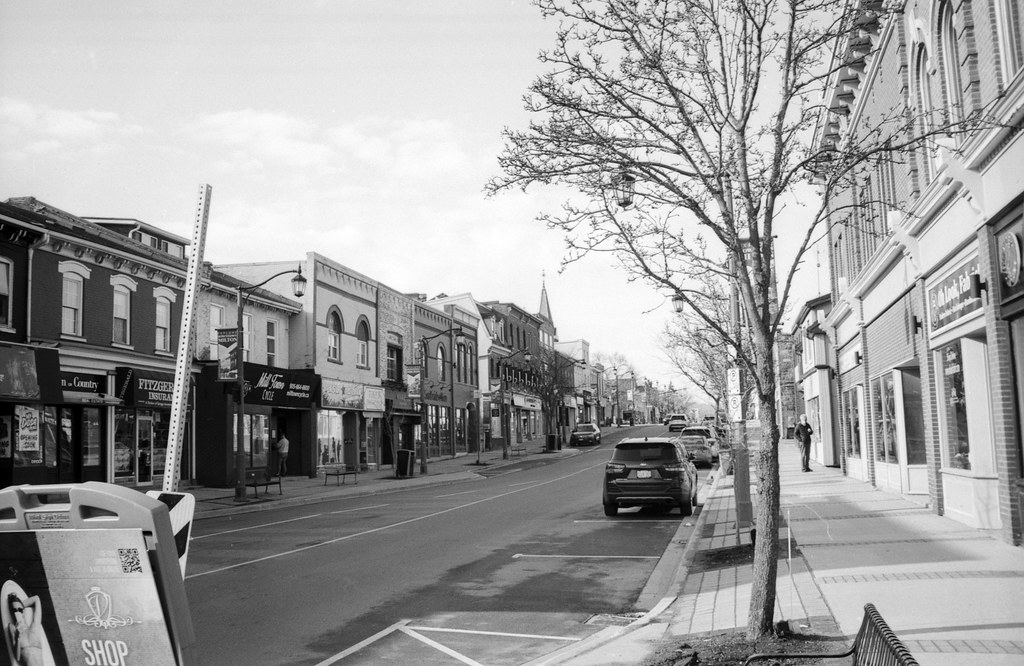


Experiences
I wasn’t expecting much from this Camera, but it is oddly fun to use the Photura. If you’re used to working with the handy cams of the late 2000s and early 2010s that contain a solid-state storage device, then the Photura will feel the same thing in your hand. The camera layout allows it to be easily operated with one hand in the field, with only the two controls that matter, the shutter and the zoom control. Despite being bulky, the Camera isn’t too hard to operate or carry around, although that side flash/lens cover is a bit awkward, sticking out to one side. What is a nice touch is drop-in film loading after a fashion. You do have the pull the leader out slightly from how it comes out of the canister, then make an s-curve and set the tail into a channel with the tip in a bracketed area. Once done, close the bottom, and the film will automatically load. A couple of excellent options are that you can disable the onboard flash, that setting is remembered, and in the right conditions with the right film, you don’t need that flash. Other than that, the Camera is secondary; there are no other override controls. Get out there and enjoy the experience. I did not want the viewfinder; you must look at it dead in the centre to see through the finder. This could be more because of my glasses than a problem with the finder itself. And as point-and-shoot finders go, it isn’t bad. While not a perfect view of your composition, it does have a framing bracket with two partial lines about a quarter way down from the top to help with parallax correction. There is also a centre-targeting reticle that shows your focus point; a small green LED to your right will light up when the focus is locked on, and a red LED if the Camera thinks that flash is needed. Oddly enough, there is a top-down viewfinder option with a small switch on the top of the body, one might think it is a waist-level finder, but you do have to hold the Camera up to your eye for it to work. One thing that does need to be noted is being conscious of what film you’re loading into the Camera. During the second roll, I was unaware of the top shutter speed, 1/250″. I didn’t realise this when I dropped in a roll of Kentmere 400. I figured the lens would stop down enough or that the top speed was 1/500″. Sadly the roll was pretty over-exposed; thankfully, being a black & white film, it was easy to recover usable images. The Camera will rewind automatically at the end of the roll, or you can manually rewind mid-roll but note that the leader will rewind with no way to change that. Despite everything, the Camera is much more fun than I expected and certainly isn’t bad.
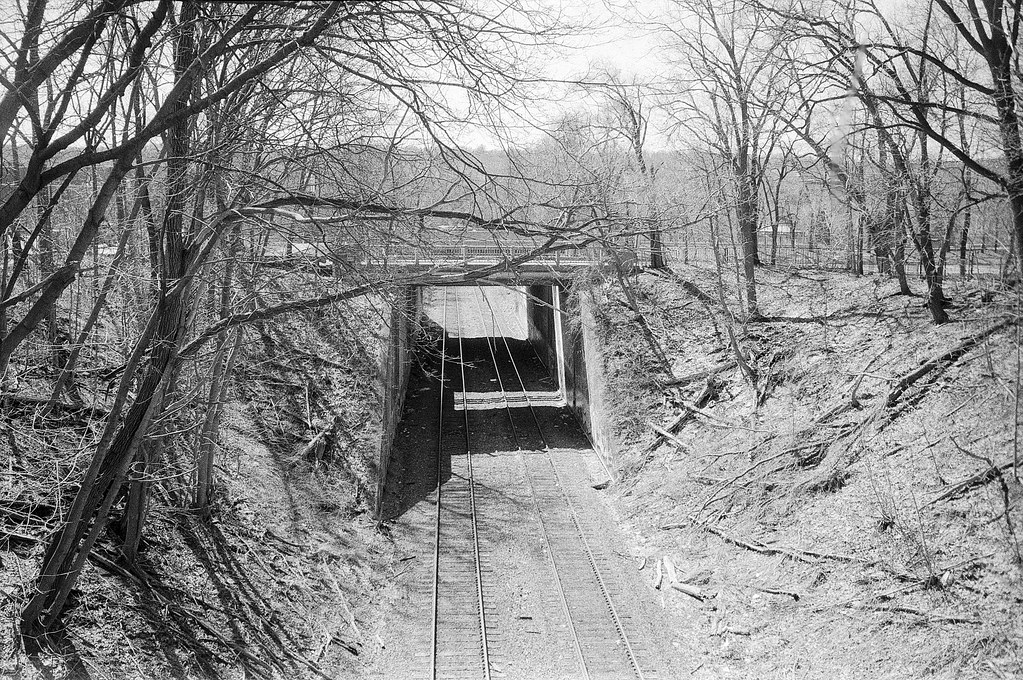


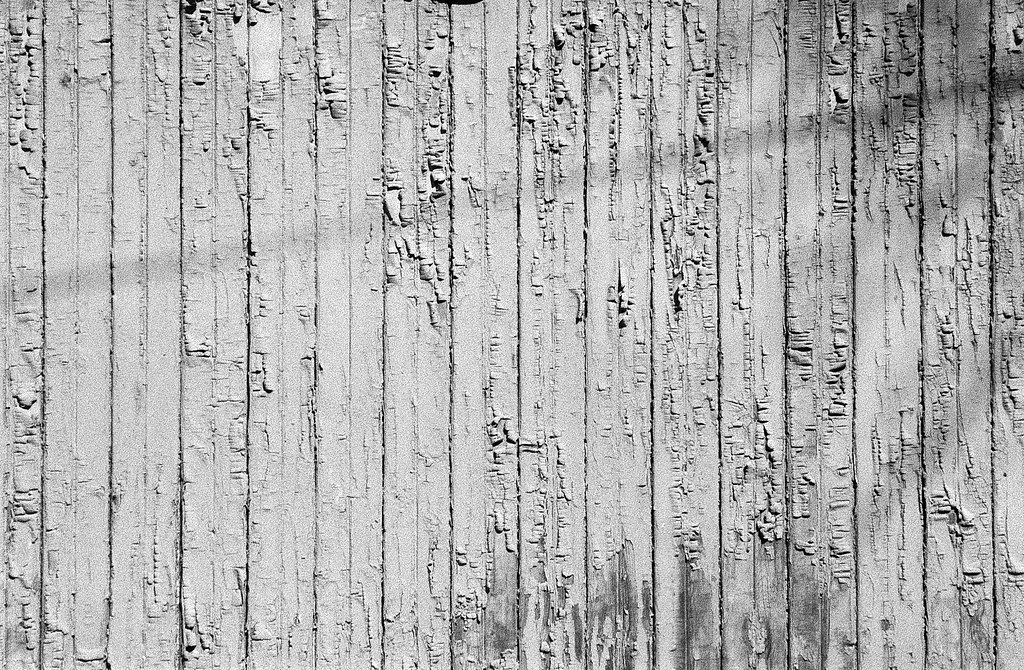
Optics
I did not have high hopes for the Photura in the optical category. Point-and-shoot cameras can have excellent lenses, but some are not as good as one might hope. And being used to some perfect SLR glass from Canon, I did not think that quality would translate to their point-and-shoot cameras. And well, it impressed me because the lens on the Photura is excellent! While not as comprehensive as I would like with only 35mm, it’s a comfortable focal length as a catch-all for the user. And I did expect some softness at the 105mm end, but again, still sharp. And what also impressed me is that there was no distortion when focusing in close. The biggest problem is that while decently fast at the 35mm end with f/2.8, once you get down to 105mm, you have an open aperture of f/6.6, which in some cases did create some level of camera shake because the Camera went with a slower shutter speed. But that is the only genuine concern for the lens; otherwise, the lens on the Photura is competent and delivers excellent quality images.
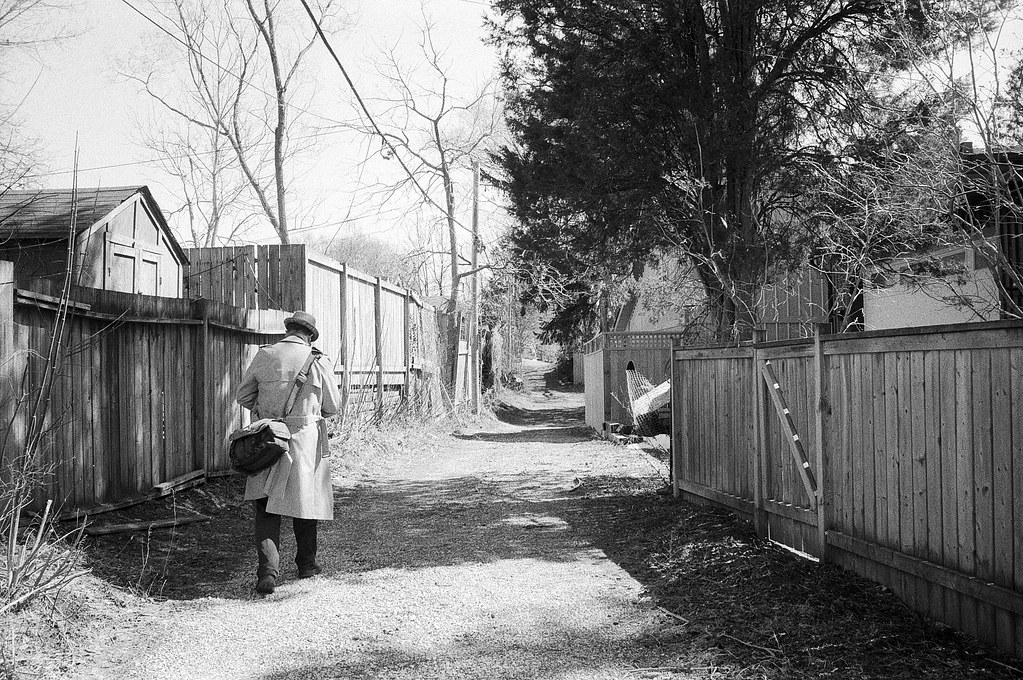
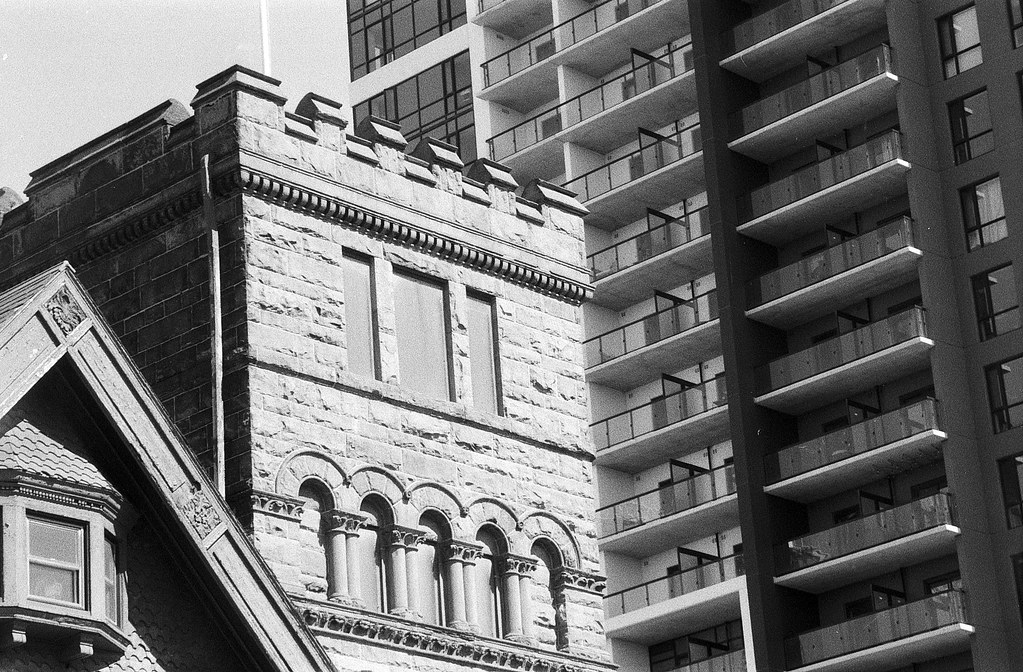


Lowdown
I admit I had concerns about usability and image quality when I first picked up the Camera. It was in a style I was unfamiliar with in still photography, and given the Camera’s age and type, the lens was the second. Both concerns were quickly eliminated as the Camera is fun, easy, and delivers superb optical quality. It certainly will turn heads if you are using this regularly. The big issue is the power source, a single 2CR5 battery, which, while available, is only available in speciality battery or camera stores. And they don’t have a long life in the Camera, so if you’re using this on a trip, carrying a couple extra with you might be best, increasing the cost. Thankfully the Camera itself is not that expensive on the used market, with most going for between 27$ to 50$. That will net you the Camera alone and maybe the manual or bag. A complete original kit will be about 100-140$ which still isn’t too bad on the pocketbook. And if you’re into weird or want a little piece of Canon design history, then the Photura is undoubtedly worth your time.
Further Reading
Don’t just take my word on the Photura; you can check out the reviews by other awesome camera reviewers!
35mmc – Canon Epoca – A Review of a Twice Owned Camera
Lomography – Canon Photura – an interesting blip in 35mm evolution
Nokkos Photoblog – Canon Epoca Review
Cheap Camera Guy – Canno Photura: An Interesting Bridge Camera
DIY Photography – This Weird Canon 35mm Camera looks like a Camcorder
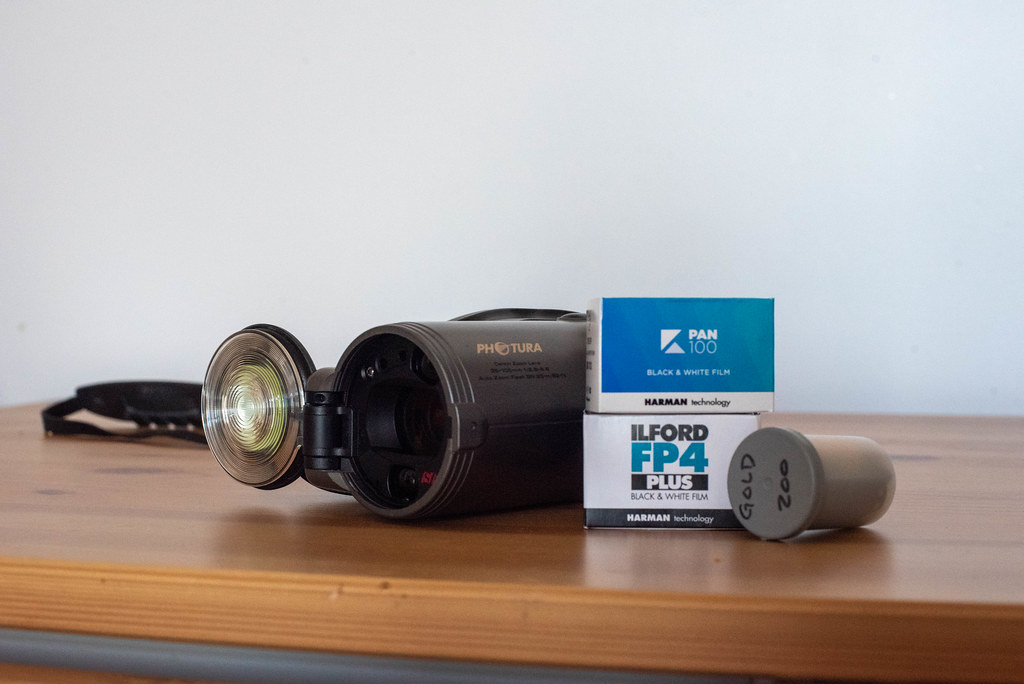

Lens looks really sharp to be honest, but I’m not surprised as the “bridge” cameras (I think that’s the right terminology?) all seem to to have pretty good lenses. Better than most of the point and shoot zooms anyway. Seems to be more in the 90’s-slr-with-decent-kit-lens territory, but I would personally much rather use a 90’s slr as they are equally cheap and about the same size while being a lot more capable. Still fun to read about these strange and somewhat forgotten cameras!
Yup! Bridge camera is the correct term! And yeah, the lens is great compared to other P&S cameras of the era.
This was the 1st camera I ever bought. I was in the Navy Exchange at Guantanamo Bay and wanted a camera to document the unfolding humanitarian crisis of the Hatian exodus in 1991/92. That camera served me well throughout the 90’s.